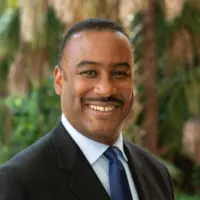What strategies will drive fundraising success in 2025?
Discover the latest trends shaping the future of nonprofit fundraising through this on-demand video: 2025 Philanthropy Pulse Webinar: Data-Driven Insights Shaping the Future of Giving. We preview key findings from the 4th edition of our annual CCS Philanthropy Pulse Report, featuring insights from hundreds of surveyed nonprofit organizations around the globe. Together with nonprofit professionals, we explore critical topics, including:
- Fundraising strategies and expectations for 2025
- Sector-specific trends impacting philanthropy
- The evolving role of technology & services in fundraising success
The Philanthropy Pulse Report is more than just data—it’s a roadmap for success. This video brings these insights to life, offering you actionable takeaways that can be immediately implemented to inform your 2025 planning.
PRESENTED BY



Frequently Asked Questions (FAQs)
Survey Methodology & Respondents:
When was the 2025 CCS Pulse survey conducted?
The 2025 CCS Philanthropy Pulse Survey was conducted from October 22 through November 27, 2024.
How many organizations participated in the 2025 CCS Pulse Survey?
Nearly 650 organizations from 34 countries and across 46 US states participated in the 2025 CCS Philanthropy Pulse Survey.
How have respondent demographics evolved over the years?
The 2025 CCS Philanthropy Pulse report reflects a truly global perspective, with 165 organizations outside the US contributing insights. For the first time, this expanded participation highlights global differences in the challenges, trends, and opportunities shaping philanthropy.
How are “International” nonprofits defined?
In the 2025 CCS Philanthropy Pulse report, the term “international” refers exclusively to organizations outside of the US.
Donor Trends & Retention
what are the trends in donor retention?
While donor acquisition and retention remained key challenges for nonprofits in 2024, cited by 47% and 23% of organizations respectively, both have seen significant year-over-year improvement. Donor retention, in particular, has improved by an impressive 24% over the past two years, likely attributed to the rise in generative AI technology that allows organizations to more easily personalize and customize targeted communications.
How have donor engagement strategies across generations shifted?
Organizations are increasingly turning to digital strategies for donor engagement. Key tactics include sharing cause-based, impact-driven narratives and using personalized, targeted outreach to connect with younger audiences. By aligning messaging with different generations’ values and preferences, nonprofits can foster deeper engagement and build lasting support.
Learn more about effective strategies for finding, engaging, and retaining the next generation of philanthropists.
What are the trends in direct mail usage?
Direct mail has declined in popularity, with only 19% of responding organizations reporting leveraging this in fundraising practices. While targeted digital communications continue to lead the way in donor engagement in 2024, live events and in-person gatherings experienced a resurgence, overtaking virtual events in popularity.
AI & Digital Strategies
What are the biggest challenges nonprofits face with their donor data?
More than half (54%) of organizations reported that inaccurate or incomplete data are key challenges to leveraging donor data. Similarly, 55% of organizations struggle to determine which analyses to conduct or face challenges due to insufficient training in data analysis.
How are organizations leveraging AI and digital strategies in fundraising?
While 47% of survey respondents have not yet responded to AI, two-thirds (61%) of organizations report their fundraising staff has at least some knowledge of AI technologies. Among nonprofits using AI, personalized donor engagement is the top benefit, with 31% improving communication and campaign targeting. While fewer have adopted automation (9%) or predictive analytics (9%), AI’s potential to enhance efficiency and engagement continues to grow.
What is the intersection of AI and DEI in fundraising?
AI and DEI intersect in fundraising by enabling more inclusive donor engagement through personalized communication, data-driven audience insights, and equitable outreach strategies. AI can help nonprofits identify and engage diverse donor communities, reduce bias in fundraising efforts, and tailor messaging to different cultural and demographic groups. However, ethical considerations are crucial, as AI models can reflect existing biases in data. Nonprofits must ensure transparency, oversight, and intentionality in AI use to advance DEI goals while avoiding unintentional disparities in donor targeting and engagement. Learn more by checking out our AI in Fundraising paper.
Planned Giving & Donor Advised Funds (DAFs)
How can nonprofits more effectively engage with DAF donors and sponsoring organizations?
Part of the appeal of DAFs is their anonymity. However, nonprofits can still research DAF sponsors to understand donor alignment and giving priorities. Also, don’t be afraid to ask directly. Most DAF donors do not mind the question, and even if they don’t give through a DAF, they will appreciate learning about their opportunities. Nonprofits that receive a high number of DAFs also typically have detailed webpages promoting and encouraging DAFs, information on how they work, and embedded tools to make giving through their sponsoring organization easy.
Reach out to your local Community Foundation and keep them posted on your programs and initiatives. They may be able to connect you to new donors as well as provide technical support and expertise to more complicated non-cash gifts.
By taking proactive steps to target and solicit gifts from DAFs, nonprofits stand to unlock a valuable source of funding and broaden their revenue streams.
What are non-cash assets?
Cash is defined as cash, check, or wire transfer from a bank account. Non-cash are defined as gifts of stocks/bonds, real estate, etc. but also includes, Foundations, DAFs, Retirement Assets, etc.
What strategies are most effective for educating donors about planned giving?
Marketing plays a crucial role in ensuring that the message of a planned giving program reaches potential donors, raising awareness about the organization’s legacy initiatives and the impact of major and planned gifts. Through targeted marketing efforts, organizations can effectively communicate the:
- Immediate impact (major gift of assets)
- Future impact (deferred gifts)
- Benefits to and stories from legacy donors
- Potential tax savings
- Trust and engagement fostered among supporters
- Opportunity to promote the program’s mission
Consistently and gradually communicate to potential donors over time. Draw awareness through various channels, gently introducing the concept of legacy giving. As the message is repeated and reinforced, individuals begin to recognize the value of leaving a legacy. Create an increased inclination to come forward when they feel ready to make their own contribution. This steady and persistent approach ensures that the idea of legacy giving and major gifts of assets gradually sinks in, leading to increased engagement and support from donors when the time is right for them.
Train your gift officers to talk about deferred gifts or blended gifts (current gift / multi-year pledge and deferred gift), and incorporate these non-cash gift alternatives into their discussion with donors. Even if they are not planned giving experts, it’s a great way to initiate the conversation, engage donors in thinking about legacy gifts in addition to their current / major gifts.
Create planned giving brochures and update your website to include gifts of non-cash assets. Host webinars and presentations to educate your donors about planned gifts. Consider partnering with other organizations to host planned giving seminars. Leverage experts in your community to present and provide additional information.
Here’s a few talking points to open the door for a planned gift conversation with a potential donor:
- What motivated your first gift? What inspires you to keep giving?
- What brings you the most joy in terms of your philanthropy?
- Would you be interested in learning how designating our organization as a beneficiary of your retirement plan could help provide your heirs more financial freedom?
- Who should be a part of future conversations? (Family? Attorney? Financial Advisor?)
- What issues do you consider when making decisions about your estate plans and philanthropic contributions?
- What do you hope to accomplish with your philanthropy? What type of impact would you like to see?
For folks who want to dive deeper into planned gift donor conversations, the National Association of Charitable Gift Planners offers an extensive training on Conversational Gift Planning.
Hiring & Workforce Trends
What are the primary drivers of high turnover in the nonprofit sector?
Based on the survey results, high turnover in the nonprofit sector is driven by several factors, including limited opportunities for career growth and advancement, burnout from high workloads, and compensation that may not always be competitive with other sectors. Additionally, shifting donor priorities and funding uncertainties can create job instability, while evolving workplace expectations—such as remote flexibility and work-life balance—also influence retention. Organizations that invest in professional development, create clear career pathways, balance their staff ratios, and have a strong workplace culture tend to see stronger staff retention.
What trends are emerging in the hiring market for fundraisers?
Fewer organizations (23%) increased their staffing in 2024 compared to 2023 (33%), with most organizations responding that fundraising staffing levels remained the same (59%). About one-fifth had fewer staff compared with the prior year. The rationale stems from limited salary budgets and difficulties in finding qualified candidates. This is further compounded by nearly one-third (28%) of organizations citing a lack of internal growth opportunities and high turnover rates, which have intensified hiring challenges.
Policy Considerations
With reductions in government funding, how can nonprofits adapt to fill the funding gap?
Federal executive orders and policy shifts are already impacting many nonprofit organizations. While some sectors are waiting to see how these changes unfold, others are actively adapting their strategies.
Change is a constant in our field, and while we may not have every answer yet, experience has shown that thoughtful strategy leads to long-term success. From our work with organizations across all sectors, we’ve reinforced a few key principles to navigate moments of uncertainty:
- Prioritize stability. As Dennis Serrette from the National Urban League shared, many organizations are leveraging a stability strategy—focusing on sustaining their base so they can course-correct if federal funds shift elsewhere. A measured approach ensures adaptability.
- Remain active and donor-focused. Kelli-Ann Nakayama from the Japanese American National Museum emphasized that nonprofits should not put things on pause during moments of disruption. Donors are resilient, and organizations that stay committed to their mission and continue engaging donors will retain their support.
- Keep making your case. As Eileen Heisman from the National Philanthropic Trust noted, when uncertainty causes hesitation, nonprofits must double down on donor cultivation. Continue sharing your impact, engaging supporters, and reinforcing why your work matters—so when the landscape shifts, you remain front and center.
- Assess and adapt. Carefully evaluate your funding landscape, lean into diverse fundraising strategies, and personalize donor outreach to meet supporters where they are.
Ultimately, the most successful organizations will be those that stay proactive, communicate effectively, and remain mission-driven—even in times of uncertainty.
How should leadership and board members APPROACH DEI in fundraising?
Take a donor-centric approach, respect and foster cultural competency amongst your team, draw upon shared values, and don’t be afraid to share your personal connection to the mission (even if your lived experiences and backgrounds are different) when inviting prospective donors to join you in support of your organization. Engage the advice and support of your colleagues in navigating through social norms and customs of other cultural groups. For insights on engaging donors of color and adapting strategies for a more inclusive approach, explore our Everyday Donors of Color: Giving Trends on-demand video.
What are the best resources for staying informed on regulatory developments and policy updates?
The National Council of Nonprofits has a webpage dedicated to policy updates.
More Insights
CCS Philanthropy Pulse: Arts and Culture Spotlight
This Arts and Culture Sector Spotlight is adapted from CCS’s 2025 Philanthropy Pulse report to provide an in-depth look at the data provided by 104 survey respondents from that sector.
CCS Philanthropy Pulse: Faith Spotlight
This Faith Sector Spotlight is adapted from CCS’s 2025 Philanthropy Pulse report to provide an in-depth look at the data provided by 38 survey respondents from that sector.